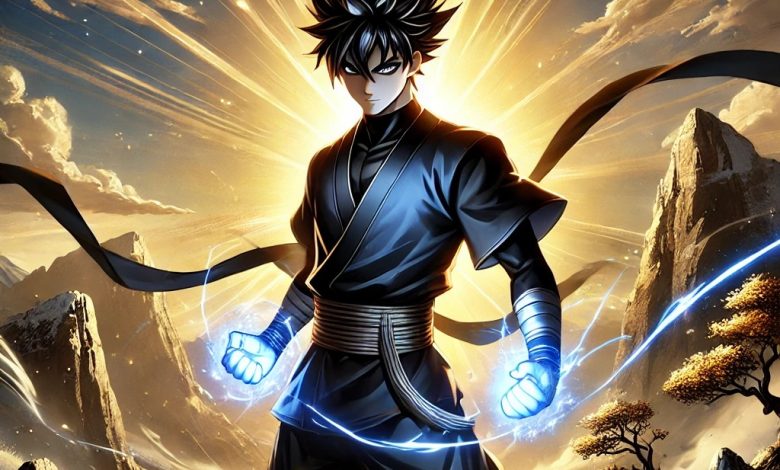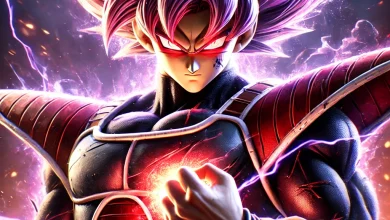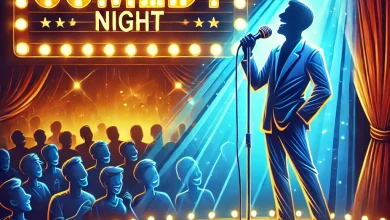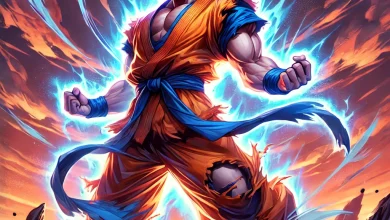10 Reasons Why Goku Black is the Most Iconic Villain in Dragon Ball History

Table of Contents
Introduction to Goku Black
Goku Black is one of the most intriguing and iconic antagonists in the Dragon Ball franchise. Introduced in Dragon Ball Super, Goku Black made his debut during the Future Trunks Saga, quickly becoming a fan-favorite character due to his unique blend of power, menace, and philosophical depth. Unlike traditional villains in the series, Goku Black’s complexity and motivations added a new layer of narrative intrigue. His arrival sparked widespread discussion within the Dragon Ball community, with fans admiring his design, abilities, and role in the overarching storyline.
Backstory and Origins
To understand Goku Black, it is essential to explore the character of Zamasu. Zamasu, a Kai apprentice from Universe 10, was initially introduced as a disciplined and curious individual. However, his disdain for mortals and his belief that they were unworthy of existence formed the foundation of his villainous turn. Using the Super Dragon Balls, Zamasu enacted his plan to become Goku Black by swapping bodies with Goku. This body swap was pivotal, as it allowed him to wield Goku’s immense power while retaining his own twisted ideology.
The transformation into Goku Black tied directly to the larger narrative of Dragon Ball Super. His origins were deeply rooted in Zamasu’s goal of eradicating mortals and achieving what he called “justice.” The fusion of Goku’s physical abilities and Zamasu’s godly intellect made Goku Black a formidable force, seamlessly integrating his character into the Future Trunks timeline.
Appearance and Personality
Goku Black’s appearance is both familiar and distinct. While bearing Goku’s physique and facial features, Goku Black stands apart with his darker outfit, the iconic Time Ring, and a cold, piercing gaze. His attire, a black gi with a crimson sash, visually emphasizes his malevolent nature. The stark contrast between Goku Black’s appearance and Goku’s cheerful demeanor underscores the former’s sinister essence.
Personality-wise, Goku Black is characterized by his arrogance, god complex, and eerie calmness. Unlike Goku, who values life and camaraderie, Goku Black views mortals as inferior beings that must be eradicated. His calm yet condescending tone, coupled with his penchant for delivering philosophical monologues, reinforces his menacing aura. The juxtaposition between Goku Black’s dark personality and Goku’s benevolent nature creates an engaging dynamic, adding depth to his character.
Powers and Abilities
Goku Black’s powers and abilities are among the most fascinating aspects of his character. As the body-swapped version of Goku, he possesses unparalleled combat skills and adaptability. His fighting style is a seamless blend of Goku’s natural abilities and Zamasu’s refined techniques, making him a deadly adversary.
One of Goku Black’s signature weapons is the energy scythe, a weapon of immense destructive power. The scythe’s ability to create spatial rifts adds an unpredictable element to his combat style. Another defining characteristic is Goku Black’s rapid ability to grow stronger during battle. This trait, reminiscent of Goku’s Saiyan heritage, allows him to adapt and overpower his enemies.
Goku Black’s transformation into Super Saiyan Rosé is a standout feature. This form, characterized by its pinkish hue, symbolizes the fusion of Zamasu’s godly ki with Goku’s Saiyan physiology. The transformation’s aesthetics and overwhelming power captivated audiences and solidified Goku Black’s status as a unique and formidable villain.
The Time Ring further enhances Goku Black’s capabilities, allowing him to traverse timelines and manipulate events to his advantage. This artifact plays a crucial role in his schemes, enabling him to evade defeat and execute the “Zero Mortals Plan.”
Role in the Future Trunks Saga
Goku Black’s actions have a profound impact on Future Trunks’ timeline. His relentless destruction and merciless approach plunge the future into chaos, forcing Trunks to seek help from Goku and Vegeta. Goku Black’s alliance with Future Zamasu marks the inception of the “Zero Mortals Plan,” a sinister plot to exterminate all mortal life.
Throughout the saga, Goku Black engages in several key battles with Goku, Vegeta, and Trunks. These encounters are marked by high stakes and intense emotions, as the heroes grapple with the seemingly invincible foe. The emotional weight of Goku Black’s presence is further amplified by the devastation he brings to Trunks’ world, creating a sense of urgency and desperation.
The climax of the Future Trunks Saga showcases the fusion of Goku Black and Future Zamasu into Fused Zamasu. This ultimate form elevates the stakes and underscores the gravity of their mission. The final showdown, filled with spectacular fight choreography and emotional depth, highlights the impact of Goku Black’s role in the narrative.
Themes and Symbolism Surrounding Goku Black
Goku Black’s character is rich with themes and symbolism. His ideology, rooted in Zamasu’s twisted sense of morality and justice, explores the consequences of absolute power. By embodying corrupted divinity, Goku Black challenges the traditional notions of right and wrong, sparking philosophical discussions about authority and morality.
The contrast between Goku Black and Goku highlights the dangers of unchecked power and the perversion of ideals. Goku Black’s philosophy, centered on the eradication of mortals, serves as a cautionary tale about the misuse of power and the destructive potential of dogmatic beliefs.
Key Moments and Battles
Several key moments define Goku Black’s character arc. His first appearance, marked by a dramatic confrontation with Future Trunks, sets the tone for his menacing presence. Iconic battles, such as Goku’s initial fight with Goku Black, Vegeta’s vengeful assault, and the climactic showdown with Fused Zamasu, showcase the intensity of the saga.
The emotional stakes are particularly evident in Trunks’ final farewell to his timeline. This poignant moment underscores the devastating impact of Goku Black’s actions and leaves a lasting impression on the audience.
Reception and Legacy
Goku Black’s introduction was met with widespread acclaim from fans and critics alike. His role as a villain, coupled with his unique design and compelling backstory, solidified his status as one of the franchise’s most memorable antagonists. Comparisons to other iconic villains such as Frieza, Cell, and Majin Buu highlight Goku Black’s significance within the Dragon Ball universe.
Beyond the anime, Goku Black’s influence extends to video games, merchandise, and fan works. Titles like Dragon Ball FighterZ and Dragon Ball Legends feature him as a prominent character, further cementing his legacy. The character’s popularity has also inspired a wealth of fan art and fanfiction, showcasing his enduring appeal.
Alternate Media Appearances
Goku Black’s presence in alternate media adds to his legacy. His inclusion in video games allows players to experience his powers firsthand, while spin-offs and other adaptations explore his character in different contexts. The creative works inspired by Goku Black highlight his cultural impact and the fascination he continues to evoke among fans.
Analysis of Goku Black’s Character Arc
Goku Black’s evolution throughout the Future Trunks Saga is a testament to the depth of his character. From his initial emergence as a powerful adversary to his eventual fusion with Zamasu, his journey is marked by growth and complexity. The culmination of his actions and motivations leads to his downfall, emphasizing the consequences of his hubris and relentless pursuit of justice.
The fusion with Zamasu adds another layer to his character arc, symbolizing the ultimate expression of their shared ideology. However, their defeat serves as a reminder of the destructive nature of their beliefs and the resilience of the heroes who oppose them.
Impact on the Dragon Ball Universe
The character’s presence within the franchise has had a profound and far-reaching influence, shaping both the immediate storyline and the broader mythology of Dragon Ball. His introduction during the Future Trunks Saga brought not only a new antagonist but also a darker, more mature tone to the series. By weaving together elements like divine justice, the fragility of mortal existence, and the manipulation of time, his story arc added layers of complexity rarely seen before.
One of the most significant contributions is the introduction of the Time Ring, a powerful artifact with the ability to traverse timelines. The Time Ring became a pivotal plot device, allowing for deeper exploration of alternate realities and the consequences of meddling with time. This aspect of the story expanded the lore considerably, as it showcased the delicate balance that governs the universe and the potential dangers of disrupting it. The inclusion of the Super Dragon Balls further enhanced the cosmology of Dragon Ball, bridging multiple universes and introducing new opportunities for divine-scale events.
The philosophical themes underpinning the character’s arc also left a lasting mark. Unlike typical villains motivated by power or destruction, this antagonist represented an ideology. He viewed himself as an agent of justice, seeking to eradicate what he saw as the flaws of mortal existence. This approach challenged the heroes not just physically but intellectually, forcing them to confront questions of morality, fairness, and the value of life. The result was a storyline that transcended traditional good-versus-evil dynamics, offering a narrative rich in complexity and nuance.
The ripple effects of his actions were felt across the timeline, with devastating consequences for Future Trunks’ world. His relentless destruction left entire civilizations in ruins, creating an emotional weight that resonated deeply with viewers. This devastation also provided a strong motivation for Trunks, Goku, and Vegeta, driving them to push their limits in pursuit of justice and restoration. The stakes introduced by these events elevated the arc’s emotional and narrative intensity, setting it apart from previous storylines.
Furthermore, the character’s actions contributed significantly to the development of other key figures in the series. Future Trunks, in particular, experienced tremendous growth, as he was forced to face insurmountable odds to protect his world. His resilience and determination to fight against overwhelming darkness became a highlight of the arc, underscoring the enduring theme of hope that runs through Dragon Ball. Similarly, Goku and Vegeta were tested not only in their strength but also in their ability to counter a foe who exploited their own powers against them. This dynamic provided some of the most memorable battles and emotional moments in the series.
The visual and thematic design of the character also contributed to the broader appeal of the series. His presence introduced a striking contrast between familiar elements and new, darker tones. His aesthetic design, weaponry, and transformation all reflected a blend of godly power and mortal prowess, creating a visual identity that stood out even in a series known for its iconic characters. The energy scythe, in particular, became a symbol of his destructive nature, while his transformations added a layer of grandeur and spectacle to the battles.
On a meta level, the character’s arc has had a lasting impact on the franchise as a whole. The storyline provided a blueprint for exploring more complex, layered narratives in future arcs. It demonstrated that Dragon Ball could delve into philosophical and emotional territory while still delivering the high-energy action fans expect. This balance of depth and spectacle has since influenced the direction of the series, inspiring both the creators and the fanbase to imagine new possibilities.
The character’s legacy is further cemented through his influence on subsequent media. In video games like Dragon Ball FighterZ and Dragon Ball Legends, his presence is a testament to his enduring popularity. These games not only allow players to experience his unique abilities but also bring his storyline to a new audience. The wealth of fan art, fanfiction, and merchandise centered around him speaks to the cultural impact he has had, proving that his influence extends far beyond his original arc.
Additionally, the philosophical and thematic elements introduced during his arc continue to resonate within the broader Dragon Ball universe. The questions raised about divine authority, the misuse of power, and the nature of justice remain relevant as the series evolves. These ideas challenge both characters and viewers to think critically about the implications of ultimate power and the responsibilities that come with it.
Ultimately, his introduction represents a turning point in the series, bringing new depth to the storytelling and broadening the scope of the franchise. The combination of innovative lore, philosophical inquiry, and high-stakes action ensures that this arc will be remembered as one of the most impactful in Dragon Ball history. The repercussions of his storyline continue to echo through subsequent arcs, influencing character development, world-building, and the thematic direction of the series as a whole.
Conclusion
Goku Black’s introduction in Dragon Ball Super marks a significant turning point in the franchise’s storytelling, introducing a villain that challenges the protagonists in ways that transcend physical combat. With his complex backstory rooted in Zamasu’s ideology, his iconic transformations, and his menacing personality, Goku Black has cemented himself as one of the most memorable antagonists in the Dragon Ball series. The themes of morality, justice, and the consequences of unchecked power explored through his arc add a layer of philosophical depth to the franchise, setting it apart from typical action-driven narratives.
The Future Trunks Saga, enriched by Goku Black’s role, has had a lasting impact on the Dragon Ball universe, influencing both the storylines and the fans. His visual design, abilities, and philosophical motivations make him a standout character who continues to resonate with audiences through video games, merchandise, and fan discussions. As a symbol of the dark potential of power and ideology, Goku Black’s legacy serves as a cautionary tale while elevating Dragon Ball Super to new narrative heights.
FAQs
1. Who is Goku Black in Dragon Ball Super?
Goku Black is a major antagonist introduced in the Future Trunks Saga of Dragon Ball Super. He is Zamasu, a Kai from Universe 10, who used the Super Dragon Balls to swap bodies with Goku. In Goku’s body, Zamasu carried out his “Zero Mortals Plan,” aiming to eradicate all mortal life in the universe.
2. What makes Goku Black different from other villains in Dragon Ball?
Unlike many other villains in the series, Goku Black combines philosophical depth with raw power. He is not just a physical threat but also a representation of Zamasu’s twisted ideology, which challenges the morality of both the heroes and the audience. His godly intellect, Goku’s Saiyan abilities, and his unique transformation into Super Saiyan Rosé set him apart from typical antagonists.
3. What is the “Zero Mortals Plan”?
The “Zero Mortals Plan” is Zamasu’s ultimate goal to exterminate all mortal life in the universe. He believes that mortals are inherently flawed and that their existence disrupts universal balance. By using Goku’s body as Goku Black, Zamasu seeks to enact divine justice and create a utopia free of mortal beings.
4. What are Goku Black’s key abilities?
Goku Black wields a unique energy scythe capable of creating spatial rifts, along with an impressive ability to adapt and grow stronger in battle. His transformation into Super Saiyan Rosé fuses divine ki with Saiyan power, resulting in unmatched strength and elegance. Additionally, the Time Ring allows him to traverse and manipulate timelines to achieve his goals.
5. What role does the Time Ring play in Goku Black’s story?
The Time Ring is a critical artifact in Goku Black’s arsenal, enabling him to travel through timelines and evade changes to history. This artifact solidifies his role in the Future Trunks Saga, as it allows him to manipulate time and maintain his dominance across different realities.
6. Why is Super Saiyan Rosé significant?
Super Saiyan Rosé is Goku Black’s unique transformation, symbolizing the combination of Zamasu’s divine ki and Goku’s Saiyan physiology. Its pink hue and overwhelming power captivated fans and made it one of the most iconic forms in the franchise.
7. How does Goku Black impact Future Trunks’ timeline?
Goku Black’s actions devastate Future Trunks’ timeline, plunging the world into chaos and destruction. His relentless assault on mortals forces Trunks to seek help from Goku and Vegeta, setting the stage for the Future Trunks Saga.
8. What is Fused Zamasu?
Fused Zamasu is the result of the fusion between Goku Black and Future Zamasu using the Potara earrings. This form combines their strengths and ideologies into a singular, nearly invincible being, making the final showdown one of the most intense battles in Dragon Ball Super.
9. How has Goku Black influenced the Dragon Ball franchise?
Goku Black’s introduction added a darker, more philosophical tone to the series, expanding its scope and introducing new lore, such as the Time Ring and the Super Dragon Balls. His popularity has influenced video games, merchandise, and fan culture, solidifying his place as a cornerstone of the franchise.
10. Is Goku Black the same as Goku?
No, Goku Black is not the same as Goku. He is Zamasu, who used the Super Dragon Balls to switch bodies with Goku. While he possesses Goku’s physical abilities, his personality and motivations are entirely different, driven by Zamasu’s ideology of divine justice.



